After working on this guide for weeks, we asked our friends at Thrive Market — which has *genuinely* played a huge role in cutting toxins and bad ingredients from my house — if they’d be up to sponsor it to make it accessible to all WTC readers, and they agreed! Thank you, Thrive!
We know a lot more about microplastics, forever chemicals, and harsh cleaning agents now than we did back when I established my first real kitchen as a newlywed 12 years ago. Though research varies on how much harm they cause to humans, certain chemicals are widely believed to have endocrine-disrupting effects (aka, they can mess with our bodies’ natural hormone processes), including BPAs and some PFAS.
Overall, it would appear that the less we rely on plastic and manmade chemicals in our kitchens, the better, so I’ve been working to slowly swap out certain materials and invest in new gear to reduce exposure to them while I cook and clean.
You know by now that we like to keep things positive and guilt free here at What to Cook. We are all doing the absolute best we can with what we’ve got! So PLEASE know that this guide is in no way meant to make anyone feel bad about anything you have in your kitchen. If you’re a subscriber to this newsletter, you’re already committed to preparing healthy homemade meals for your family, which is likely doing more good for everyone’s health in the long run than cutting every single speck of plastic from your house ever would!
That said, I get questions from the WTC community all the time about which kitchen tools and products I use, so I wanted to offer an updated list of my recs.
There wasn’t an overnight overhaul of everything in my kitchen — rather, it’s been a gradual process. When I ran out of something like a bottle of dish soap, or when I noticed a scratch on my old nonstick pan, I used it as an opportunity to shop around for a cleaner alternative. I haven’t had the time or budget to swap everything all at once, but little changes here and there over the course of several months — or years, really — has made it feel doable.
I am neither a teetotaler nor an expert on all of this. There are items I still turn to for convenience like microwavable bags of frozen rice and saran wrap. I secretly love when I’m in a state that still allows plastic straws (I dare you to try giving a hungry toddler a smoothie with a paper straw and then ask me if that’s a hill you’d die on), I use ziplock bags to freeze leftovers in (though I never heat the bag), and I buy fast food for my kids when I feel like it. I don’t think it has to be — or even can be in today’s world?! — all or nothing, and I am by no means the poster child clean living. But I also believe that making some shifts is better than none at all! I’m not writing this to be an encyclopedia of all chemical-laden products in everyone’s home and kitchen (I’m sure there are some I don’t even know about yet!) — rather, I’m here to offer a recap of swaps I have personally made with success in my own kitchen. I’m sure I’ll have to update this in a year to account for new things we don’t even know about yet. AH!
This is a much bigger post that we can talk about later! But in general, I buy organic food and whole ingredients or minimally processed food as much as possible when I grocery shop. I love the Yuka app, which lets me scan food (and cosmetic!) products to see their health and environmental-impact scores. I also keep in mind the EWG’s Dirty Dozen list — which highlights the conventional produce items that have the highest rates of pesticide exposure. If I can afford to buy them organic, I do! And one more note on food below…
Ultra-processed kids’ snacks with a ton of additives. I almost exclusively cook homemade meals for my family, but when it came to kids snacks, I kept turning to the standard processed fare because… it’s everywhere, and it’s easy. Thrive Market, a membership-based online grocery store that delivers to your door, has genuinely helped me incorporate healthier alternatives into my family's life. I know that anything they sell contains non-GMO (non-genetically modified) real ingredients with no additives, fillers, fake flavors, or food dyes — I don’t even have to look at the ingredient list when I'm shopping, because Thrive Market has done all the vetting for me. Again, I’m not a tee-totaler here, my kids eat whatever they want at birthday parties, they eat candy on Halloween, we all eat Fritos from time to time, etc. But having our pantry always stocked with clean snacks is so helpful. Join Thrive through this link to get an extra 30% off your first order AND a FREE gift worth up to $60! I genuinely cannot recommend a Thrive membership more highly. (I’m also obsessed with Thrive and especially love their diapers! -Molly)
Ancient or scratched nonstick pans. Really old Teflon-coated nonstick pans (those made before 2012) may contain a harmful type of PFAS, aka forever chemical, called PFOA. Though newer nonsticks may not pose as much of a health risk as the hand-me-down nonsticks I cooked with in my early 20s, it’s widely agreed upon that when there’s a scratch on a nonstick pan (new or old), it’s time to ditch it. And guess what, they scratch really easily. I got tired of buying new nonstick pans — and hearing that/worrying about whether PFAS are safe or not — so I decided to switch to carbon steel, stainless steel, and ceramic nonstick pans instead. (This article’s really helpful if you want to learn more about PFAS.)
Plastic storage containers. I used to stockpile takeout plastic containers to reuse as food storage, but now I know that many contain bad-for-us chemicals like BPA and phthalates, which can slough off via microplastics (aka teeny tiny specks of plastic) into food, especially when heated. So now I only use glass. (My exception here is ziplock bags — I still use them to freeze leftovers in, but I always let my leftovers cool first before filling the bags, and I never heat the bags in the microwave or hot water.)
Black plastic cooking utensils. A study came out last fall that freaked the world out — it claimed that many of the black plastic cooking utensils we’ve all been cooking with for years (my beloved fish spatula included!) contain harmful fire-retardant chemicals recycled from electronics. It later came out that that study overinflated the danger, but, regardless, I’ve been switching to safer materials like wood, stainless steel, and silicone to eliminate any worry about microplastics (and whatever chemicals they may or may not contain) leaching into the food I’m cooking.
Cleaning products with harsh chemicals and artificial fragrances. I’ve read that harsh chemicals in standard cleaning products can be bad for us and that regulations surrounding “fragrances” are very loosey-goosey, so I’ve been upgrading these too. In general I opt for “unscented” cleaning products. I also lean a lot of Thrive because, tbh, chemical ingredient labels go right over my head and I trust that they’ve vetted all their products for health concerns.
Single-use paper towels. We’ve known for a while that single-use anything isn’t great for the planet! I haven’t bought paper towels in about two years — we have a big drawer full of dish towels, I probably go through two per day, we wash them and return them to the dish towel drawer. It’s definitely an adjustment but you get used to it quickly, I promise! PS, if you ever see a paper towel in my kitchen it’s because my mother has been in town and bought them because she can’t live without them, haha.
OK, so that’s what I’ve been trying to rid my kitchen of in recent months and years. Now, here are the products I’ve tried, tested, and can honestly recommend. Again, I’m not suggesting anyone go out and buy all of these items right now! But when you’re ready to swap things out, here are my recs!
Cookware
NONSTICK SKILLETS
Nonstick skillets are a home cook’s best friend — they’re like an insurance policy. Other skillets are simply harder to use and not screw up whatever you’re cooking.
I get messages often that are like, “my nonsticks are only three years old and they’re already losing their nonstick coating!” and I’m like yep — that’s right! Nonsticks are not a forever pan! They are a three- to five-years pan. I’m sure the companies would tell you otherwise, but if you want that really slippery nonstick coating, you gotta replace them once they lose it.
PS, you know not to use stainless cooking tools like spatulas and tongs with your nonsticks right? They scratch them. Silicone and wood only!
MadeIn CeramiClad Nonstick Frying Pans are workhorses in my kitchen. I like to own an 8”, 10”, and 12” nonstick skillet. Ceramic coating is not quite as slippery nonstick as a good ole fashioned Teflon skillet, but still very effective. Use code CARO to save 10%!
These All-Clad Stainless Steel Nonstick Pans are really, really great. Probably the most used skillet in my kitchen.
FYI I have been a huge fan of Anolon pans forever — great price point, and, I thought, free of PFOAs. Now there’s evidence that they do (or did?) contain PFOAs, though they’re likely not harmful as long as they aren’t heated above 500°F or scratched. When mine lose their nonstick coating I will probably not replace them, unless they change their coating, and I’ll stick with All-Clad.
OTHER SKILLETS
Preferably, you’d also own a few great NOT nonstick skillets. A nice, crusty sear happens when meat (or veg) stick to the skillet, and then release once they’re cooked through. So you cannot expect to get a beautiful golden-brown sear on your food with a nonstick skillet! That’s where one of these come into play:
A 12” Le Creuset or Staub Cast Iron Skillet is, in my opinion, an essential pan in every kitchen. The enamel coating makes them less fussy to use than regular cast iron — you can wash them with soap, whereas non-enamel coated cast iron skillets are much trickier to use and maintain. I’ve had the same Staub cast iron skillet (in Grenadine, if you want to be twins) for 15 years, and I can’t recommend it more highly. Le Creuset and Staub are the two most well known cast iron brands, I own and love a lot of pieces from both. I’m not brand agnostic, and when I’m searching for a new piece or gifting cast iron to someone I just search which brand is having a better sale at the moment.
MadeIn Carbon Steel Skillets are my preferred everyday not nonstick (I mostly use nonstick!). I prefer carbon steel over stainless steel, it’s just a personal preference thing, I find them easier to get a nice sear with, overall easier to maintain and use. I was forever scorching stainless steel skillets, so I finally got rid of all of them. You do have to “season” these pans, which is very quick and easy to do. Use code CARO to save 10%!
Do I need cast iron AND carbon steel or stainless steel? No, you don’t need them! If you were only going to get one, I’d get a 12” cast iron skillet and otherwise use your nonsticks. But cast irons are really heavy, carbon steel is a lot lighter and easier to wield, so I enjoy having both! But remember, cooking is my job!
SAUCEPANS (aka wide pots with low sides — I use these mostly for one-pot meals!)
My go-to nonstick saucepan is the Tramontina All-in-One ceramic nonstick skillet. I use it constantly for stir fries, quick curries, etc.
My other go-to one-pot meal pan is the 3.5 quart Le Creuset Braiser. I honestly use this and the Tramontina pan pretty interchangeably — you don’t need to own both. If I could only own one and budget was no concern, I’d get the braiser. The Staub braiser is on sale right now.
POTS
Big pasta pot. I actually own Demeyere brand, which is in the $200 range, but all we are doing in this pot is boiling water, it doesn’t need to be fancy.
Small pot. We’re actually cooking in this pot, making things like sauces and reductions, so I want it to be a higher-quality product. It shouldn’t need to be nonstick because we’re cooking liquidy things in here. I like All Clad (linked) or Demeyere for stainless steel. I’m sure MadeIn is also great, I just don’t own any!
DUTCH OVENS
A Dutch oven is definitely a need, not a want. But man, I use mine ALL THE TIME. You can make soups and stews in your Big Pasta Pot ^, but a Dutch oven conducts heat more evenly, will cook more quickly, and they’re so *pretty*!!! I roast meat in them, make soups and stews, pasta bakes, on and on and on!
I probably use my 8 quart oval Dutch oven 4x a month to make huge pots of soup, roast a chuck roast or pork shoulder, etc.! I’ve owned it for 12 years and I love it so very much. They’re on big sale at Williams-Sonoma right now!
I also own a 5 1/2 quart round Dutch oven and use it very often for smaller portions! But if I was only going to own one Dutch oven, I’d make it an 8 quart.
BAKING SHEETS AND BAKING DISHES
I use Nordic Ware Naturals aluminum sheet pans. They’re non-toxic and free of chemicals, and cheap so I don’t feel bad replacing them every few years if needed. I like this set with two half sheet pans and one 1/8 sheet pan (perfect for a couple slices of bread, two chicken breasts, etc.).
I line my baking sheets with these parchment sheets. I never use aluminum foil for this, more because I think it can really mess things up and lead to burning than out of fear of aluminum leaching.
I’ve ditched all nonstick baking dishes and now use these ceramic bakers for baking cakes, brownies, lasagnas, chicken, whatever. They look beautiful straight from the oven to the table.
I haven’t replaced my old nonstick muffin tin yet, but I’m planning to get a silicone one. I like that you don’t really need muffin liners because you can pop the muffins right out. In the meantime though, I use these dye-free, chemical-free muffin liners.
I’m not a huge baker but in general if you look for Wilton aluminum cake pans, I know they’re PFAS free.
Cooking tools, utensils, and cutting boards
If you open my kitchen tool drawer, you’ll see all wooden, silicone, and stainless steel tools. Here’s what I use:
Wooden spatulas are in heavy rotation. I use all three and I actually need three, they’re always in the wash. Yes, I put them in the dishwasher, and I rub them with wood oil whenever they feel gritty!
I have long recommended a very inexpensive black plastic fish spatula. I tossed it after some plastic actually melted and got into my food, and after MUCH testing, I have two new favorite fish spatulas (which is my go-to type of spatula for cooking everything, not just fish): this one and this one. I think I slightly prefer the second one.
These are the silicone spatulas I use mostly for baking when I need a flexible spatula to scrape the batter out of bowls. I also use them for cooking occasionally, but mostly use my wooden spatulas to cook.
Silicone whisk. I like owning a silicone, versus stainless, whisk, so that I can use it straight in my nonstick skillets to whisk my eggs straight in the pan!
Silicone tip tongs. A lot of tongs are black plastic! I use the 9-inch for indoor use, and the 12-inch for grilling. I do not like those huge unwieldy grilling tongs, I just use these.
A non-toxic silicone basting brush. A lot of basting brushes use plastic bristles and they can fall out in your food and not only be dangerous from a choking perspective, but also mean you’re actually just fully ingesting plastic. Gross. I’ve tested a LOT and this is my favorite.
Vegetable peelers. Also the best for peeling big ribbons of Parmesan. Get this three-pack and replace them whenever they start to feel a little dull (once every 6 to 9 months).
Other tools in my kitchen drawer that aren’t really at risk of being toxic, but I should mention while I’m at it: cookie (and meatball!) scoops, can openers, meat thermometer, and microplane.
Large wooden cutting board. I genuinely think that having a massive wooden cutting board that lives on your countertop, right beside your stove, is key to making cooking easier. I use my wooden board for almost everything except for beets, because they stain it, and raw meat, because it feels gross, even though wood is actually anti-microbial and it’s totally fine if cleaned properly! I even use it for onions (I just scrub it with salt and a cut lemon to get the smell out).
Paper composite cutting board. This is what I use now for cutting raw meat and beets and probably some other things I’m not thinking of. I have the 14.5” board.
Cheeseboards. I also own a few pretty wooden boards that I don’t cut on, but use to display cheeseboards and other food! The one below is one that my friend who is now a big fancy contractor in Coronado made me back when he just did woodworking for fun while he was an active duty SEAL. Thanks, Shane :) This one is from a small shop and similar.
The perfect ladle does exist. Ditch that clunky black plastic or metal one you’ve had forever that doesn’t even fit in your drawer. Get this sleek wooden one. I know it’s kinda pricy but it’s part kitchen tool part display piece! Seriously makes soup night chic.
Wooden cooking spoons are a classic component in every kitchen utensil drawer and… I hardly use mine! Again, ditch your black plastic or metal spoons and go wooden. Or silicone! I stick to the wooden spatulas, for the most part, because they’re so much better at scraping the bottom of the pot, breaking up ground meat to brown it, etc. But I have and love this one!
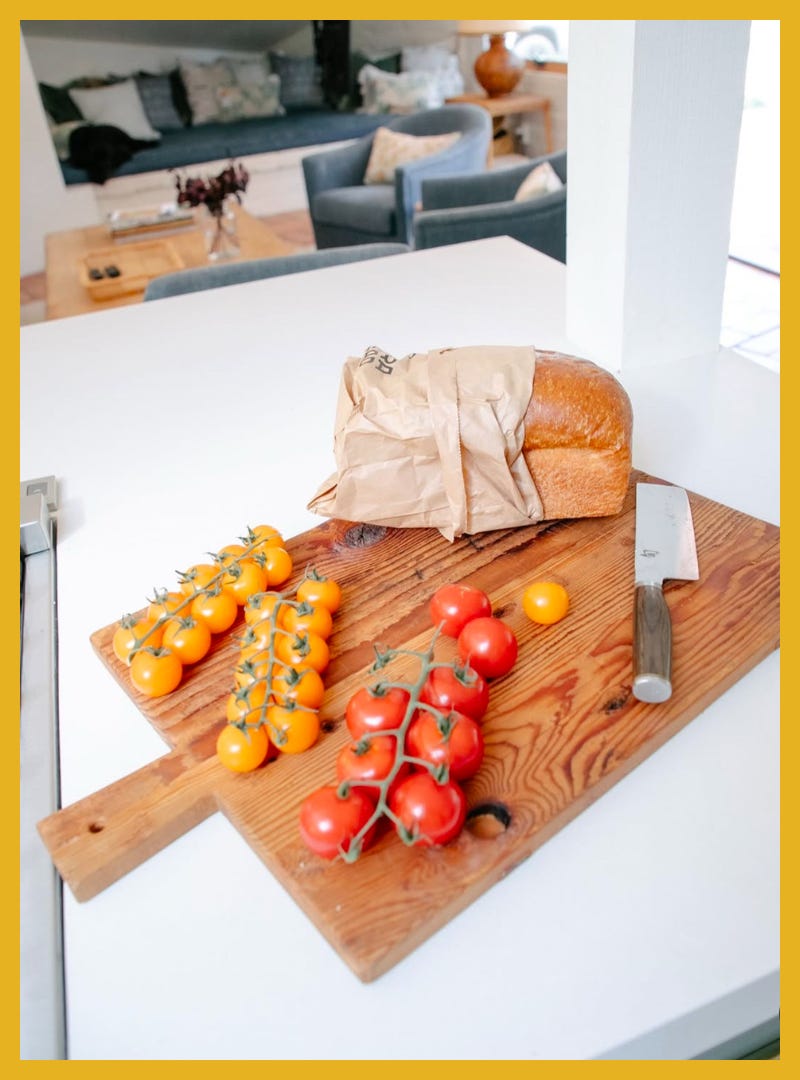
Food storage
I’ve officially gotten rid of all my old plastic storage containers! Here’s what I use instead:
These are my all-time favorite glass containers for food storage.
Like I said, I still use ziplock bags and saran wrap on occasion, but these reusable beeswax food wraps have helped me cut down a lot.
I use these glass jars to store my salad dressings, sauces, and leftovers (like half a can of beans, or cucumber slices) in.
Stasher bags are great for kids snacks on the go, marinating meat, saving last bits of leftovers.
Cleaning supplies
Products I clean my kitchen (and beyond) with:
Seventh Generation Foaming Dish Spray Replacement will change your life. Literally my dad told me he once went to three different grocery stores hunting for it because after using it at my house, he can’t go back to plain ole dish soap!
I love these walnut scour pads. They’re naturally abrasive yet safe on nonstick pans.
When food is really stuck onto tougher cookware, I pull out this bamboo scrubber.
Seventh Generation dishwasher detergent pods are our go-tos. I also use their all-purpose cleaning spray.
Aunt Fannie’s Carpet Refresher is baking soda-based and smells so good!
I try to wash all fresh produce with this fruit and vegetable wash before consuming. Again, I’m not perfect about this, but I’ll make a big water bath when I get home from the market and dunk everything in it.
Synthetic clothing and textiles play a major part in the omnipresence of microplastics so I’ve started buying organic cotton options when I can, including my rags and dish towels that I use in place of paper towels. My mother-in-law buys the classic 100% cotton Williams-Sonoma dish towels for people (including me) as a thoughtful little gift and they really are the best. I don’t like any of the new-fangled Swedish dish towels that I’ve tried! A few of you all have recommended these Marley’s Monsters UNpaper Towels, which I’m going to try too!
I’ve had an Amazon subscription for this this laundry detergent for years and love it.
Last but not least…
After listening to this Huberman Labs episode on optimizing your water quality for health, we installed a whole-home Aquasana water filtration system. Knowing that our kitchen and bathroom/bathtub water is all equally filtered and ridded of toxins and chemicals is a weight off my shoulders. We have the “Complete Solution Rhino Max Flow.” At the time of posting, I have a code CARO55 (not affiliate) that should work on their site.
You can use this $20 kit to test your water at home to see if you might want to consider a water filter.
And here’s the recommended filtered pitcher for drinking water from that podcast episode.
Again, these are just the ways *I* have swapped in cleaner materials and products in my own kitchen. I hope that at no point I sounded like a preachy little perfect person, I am not perfect! I fed my kids McDonald’s and DiGiorno on the same day this weekend! Just making small changes where I can, ha! There is so much to keep up with, and wading through fact and fiction can be hard. Especially when the facts and studies seem to be constantly shifting and evolving!
I’d love to hear about any clean resets you’ve made in your home, and about products you love and swear by!




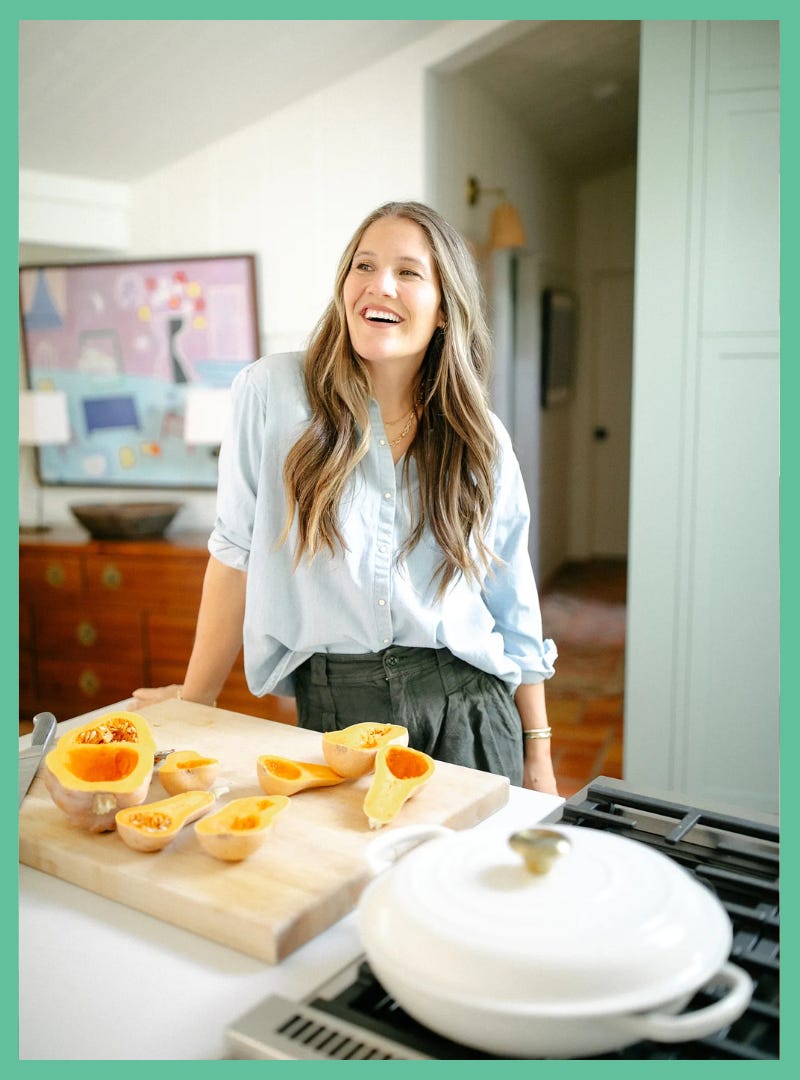



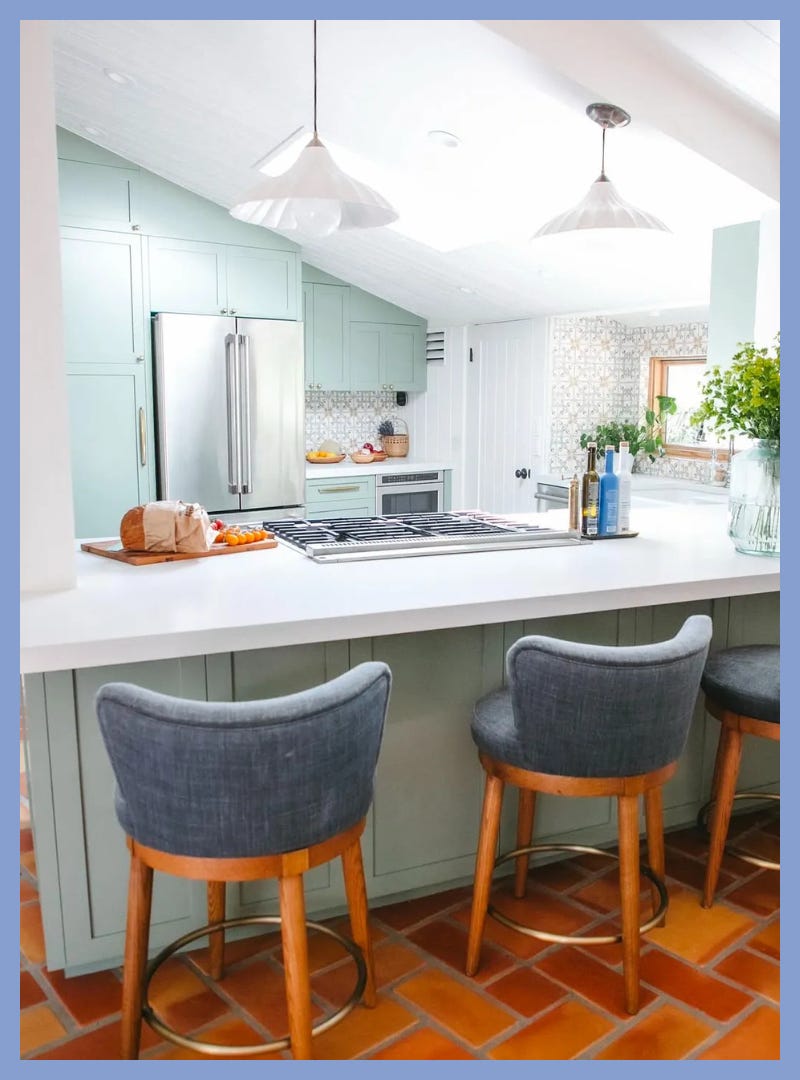


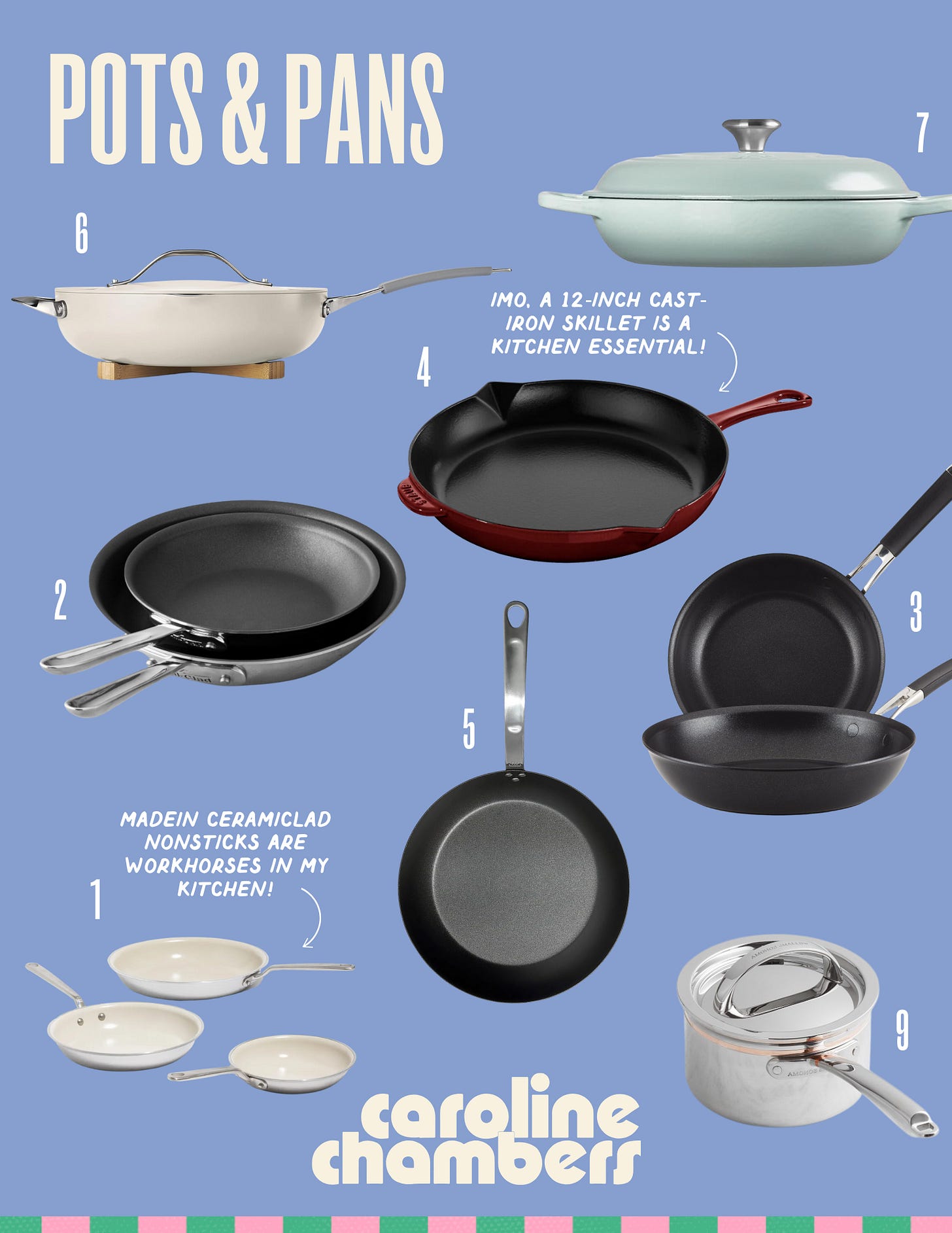
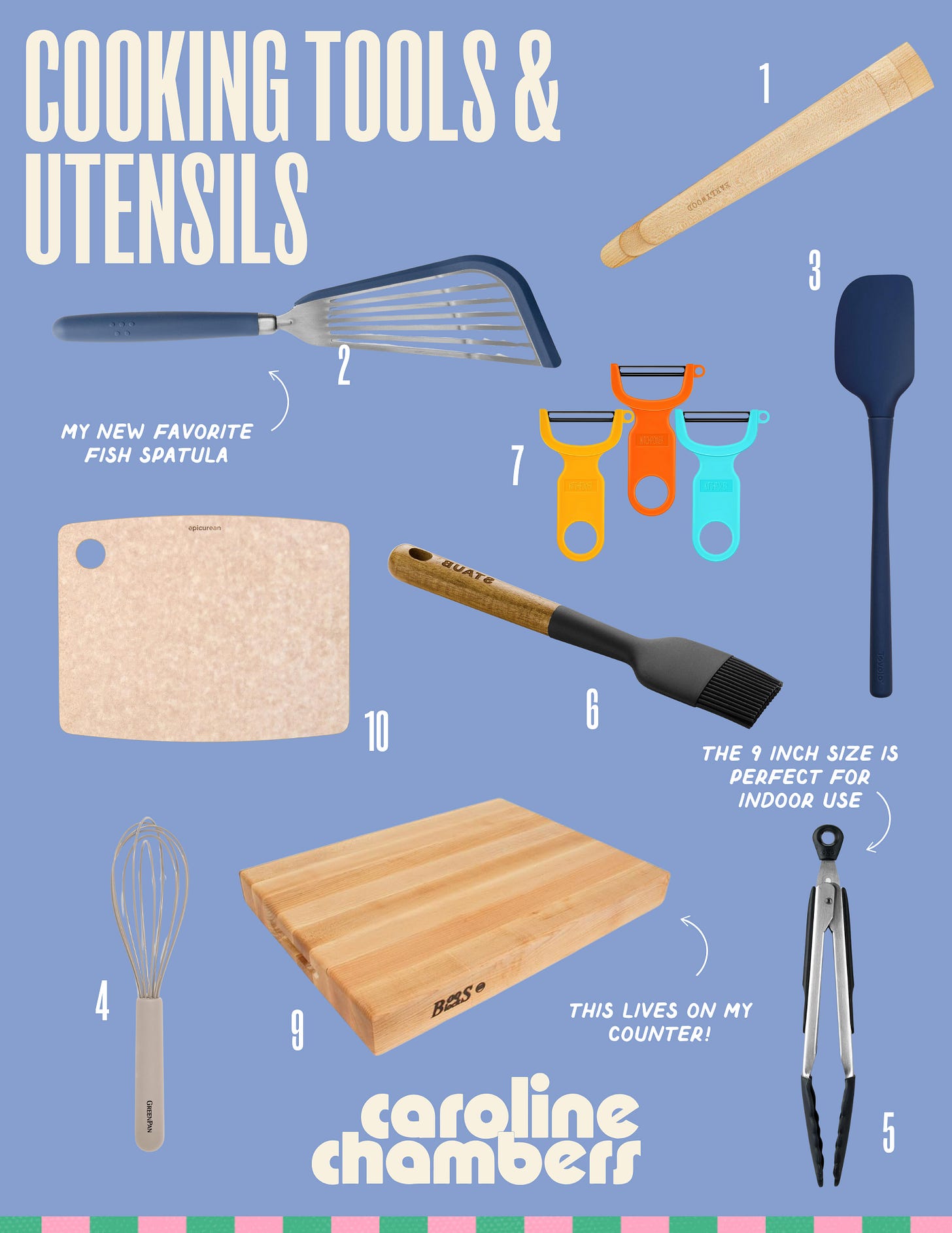
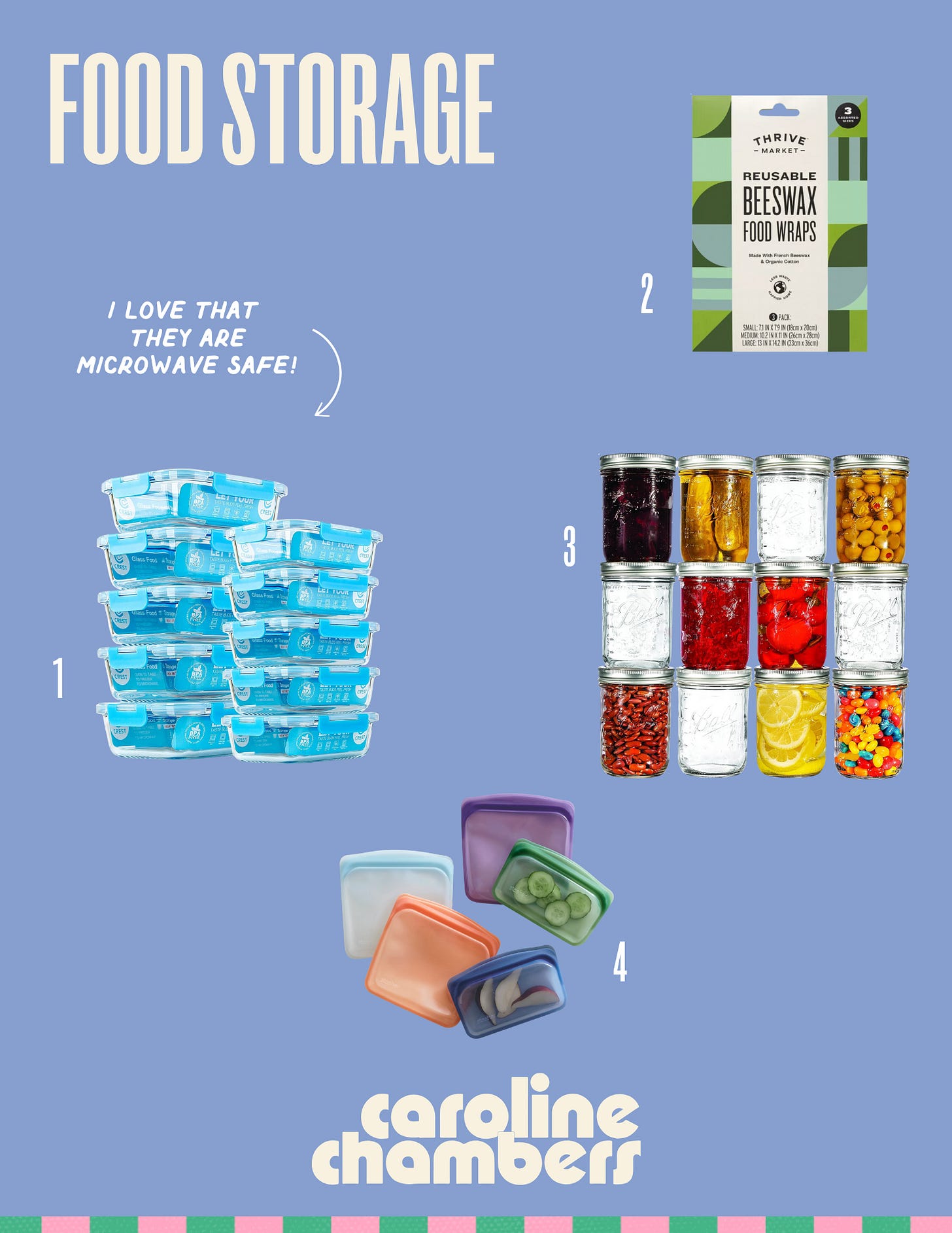
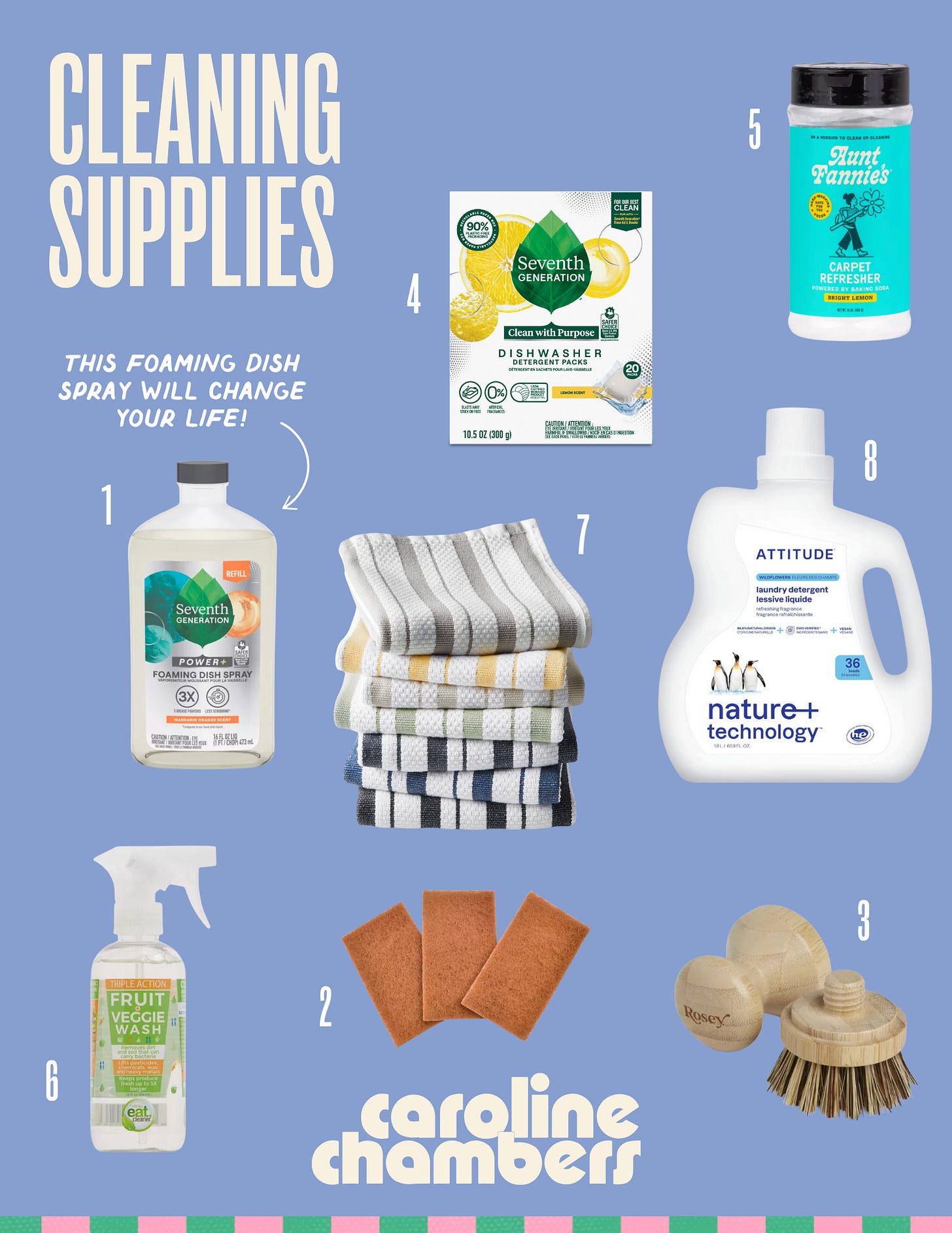
As someone who works in environmental health, it was refreshing to see a take on this not be entirely fear-based. Thanks for acknowledging that there's some nuance to studies on health risks while also gently nudging us towards fun alternative kitchen tools. I am excited to try out new utensils as I slowly phase out mine made of black plastic!
I love this so much—thank you for sharing. I’ve been thinking about slowly upgrading my kitchen for a bout a year now.
The other tip I’d love to share with the group (in the vein of no paper towels—which I agree is hard at first, but then easy!!!) is to stop using single use plastic at the grocery store. You’re going to wash your produce anyway, so let it hang out in your cart as is. Of course, I still use bags for say green beans or other small, loose veggies and fruits—but over all, I’m so glad I stopped wasting small plastic bags on things that don’t need it.